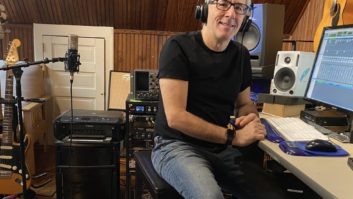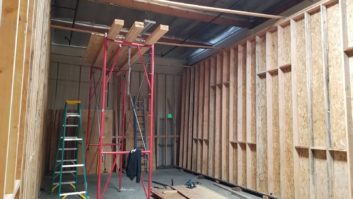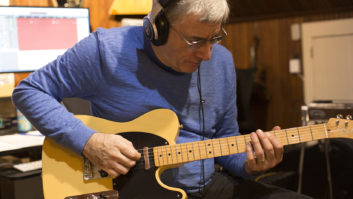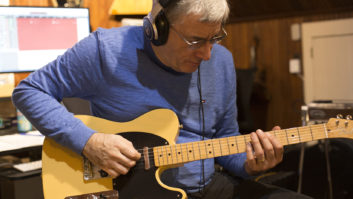I like working in a neat and nicely organized studio, I really do. However, I just don’t have the right personality to make that a daily reality. You could categorize me as a messy creative type rather than a tidy, highly disciplined one.
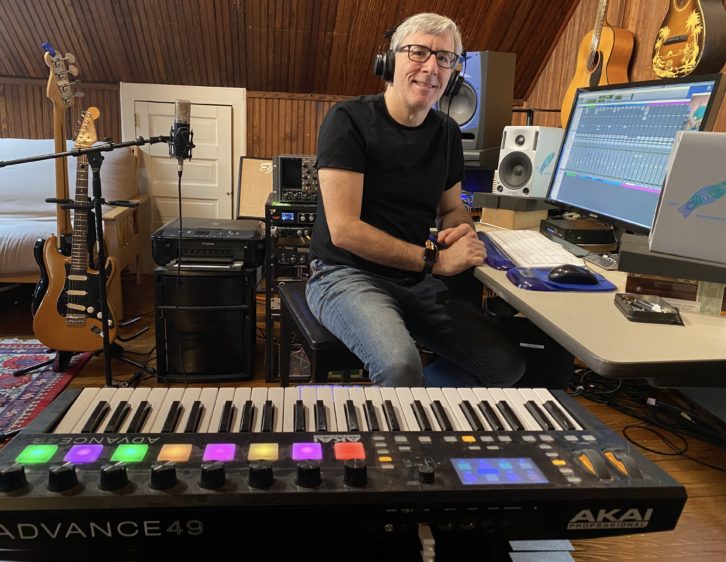
That said, when I see someone’s setup and he or she has everything perfectly in place, with no clutter, no wires visible, no mics left up and so forth, I admit to feeling envious. If only I could maintain that level of neatness and organization.
When I’m busy with a project, though, all thoughts of organizing fall by the wayside, and my focus goes strictly to the creative side. If that means that by the end of the session, my room looks like the morning after some crazy music party, with guitars and other instruments, mics and stands, and lots of cables strewn around—well, so be it.
But in my role as a music-technology journalist, I often think up and research ways to improve the systems and storage in a home studio. Many years and many studios have helped me learn—if not always implement—some useful techniques.
“A place for everything and everything in its place.” Yes, an old and annoying cliché, but it’s super helpful if you have a studio. The corollary is: “Putting something back where it goes after you use it is directly proportional to time spent finding it the next time you need it.”
The concept is pretty straightforward, but it becomes tricky to follow with the little things you have in a studio. Cable adapters, capos, guitar picks, clip-on tuners, boxes of rack screws and wire cutters are the types of items I’m referring to. If you don’t have a specific place for them, you end up putting them in the nearest bin or drawer or tucking them behind something.
Unless you hire a professional to wire your studio with custom-length cables, you’re likely going to end up with a lot of excess cabling (aka “spaghetti” or “a rat’s nest”), particularly behind racks. Trying to figure out where the other end of a cable is connected can sometimes be a search through the jungle.
I’ve found cable-labeling to be helpful for keeping track of what is going where. For example, if you label your mic cables with the same letter or number on each end, you’ll be able to quickly identify which cable you plugged into which mic and which input. Or, if you have permanent or semi-permanent cabling set up, you could use specific names (“Monitor Output L” or “Guitar Amp Mic”). Labeling your AC power cables near their plugs helps you keep track of which piece of gear they’re connected to.
Read more Mix Blog Studio: Analog Emulation—How Much Is Too Much?
Cable storage is another problematic area. Putting cables in bins or drawers is helpful to a point, but when you store them that way, they tend to end up tangled, even if you start with them neatly coiled and contained with cable ties. It’s better to hang them up if you have wall space to put up some hooks or posts.
During a project, I often find the need to write something down—mix notes, BPM or key settings, lyric ideas, and so forth. I have to fight the impulse to scribble such information on a scrap of paper or the back of an envelope. Otherwise, I end up with lots of loose paper that I don’t know what to do with.
One approach is to use a note-taking application and then save the files with the session you’re working on. Sometimes I just want to write something down, though, and don’t want to have to switch away from my session and open my note-taking software or pull out my phone and open a notes app. For those situations, I recommend the very non-digital technique of keeping a small spiral notebook on your studio desk. Old-school, I know, but effective. And it’s easy to refer back to, if necessary.
It might seem counterintuitive to take organizational advice from someone like me, whose studio tends to the messy side. But think of it this way: I do have a lot of first-hand experience in how studios get cluttered. What’s more, my problem isn’t as much the desire to stay organized but the will to follow through.
